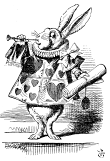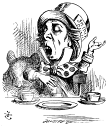In fact, they originally called it “Iwanttoeatyourbrainsbook,” but no one would join.
Dear Word Detective: As a Middle Eastern Studies major at Florida State University, I am taking a course on Middle Eastern Culture. This week, my professor offered us a bit of reading concerning the naming of the American bird “turkey” after the country in the Middle East. While I found the reading entertaining, I wondered at the validity of the story. I am attaching a link to the Facebook page that includes this story. Can you verify that this is indeed how turkeys (the not especially smart, but very tasty bird) got their name? If the link doesn’t work it can be found under the title “The Story of How the Unofficial Bird of the United States Got Named After a Middle Eastern Country” by Giancarlo Casale. — Katherine “Kat” Holton.
That’s a good question and, since Thanksgiving is approaching here in the US, a timely one as well. I did go to the Facebook link you sent along for the article by Dr. Casale, who is an Assistant Professor of History (specializing in the Islamic world) at the University of Minnesota. Unfortunately, I couldn’t open the page, probably because I am not registered with Facebook, nor do I intend to be. Readers keep writing me asking why I’m not “on Facebook” (a phrase which strikes me as way too reminiscent of “on pep pills” or “on parole”), and my answer is simple: zombies. Facebook is full of zombies. Pass it on.
I did manage to track down Dr. Casale’s turkey opus fairly easily, however, because more than 30,000 other web sites had taken the liberty of reposting it. Not to be left out, I’ve reposted it myself at www.word-detective.com/turkey, so y’all can follow along at home.
Dr. Casale’s explanation of how a bird native to the Americas came to be known as a “turkey” is indeed accurate, and his narrative of his investigation makes a charming story.
The key to understanding how the turkey got its name is the fact that, until the early 16th century, a “turkey” was not the bird we today regard as a Thanksgiving and Christmas tradition, but an entirely different bird. The “turkey-cock” or “turkey-hen” was (and is) a smaller bird (what Professor Casale calls a “chulluck” in his piece), and was also known as a Guinea-fowl, referring to its original home in West Africa. The Guinea-fowl, apparently a tasty little critter, had been imported into Europe since the time of the Roman Empire, most notably, for our purposes, by the Turkish empire (which explains how the birds came to be known as “turkeys”).
At the beginning of the 16th century, however, travelers to the New World began bringing back (and soon importing in bulk) a similarly tasty bird native to Mexico. Through a process of mass public confusion, this bird came to be known as a “turkey” as well, and eventually took sole possession of the name.
Perhaps the best indication of how confused most of the world seemed to be at one point about what was or was not a “turkey” and where the darn things came from is the fact, as noted by Dr. Casale, that just about every European country has a different name for the bird. Several languages refer to the turkey with names that mean, roughly, “bird of India,” a relic of the days when the locations of India and the Americas were far from clear in the public mind. After all, as Dr. Casale discovered, even in Turkish what we call a “turkey” is known as a “hindi,” meaning “from India.”


 can be found
can be found 




Recent Comments